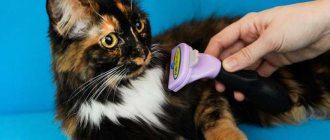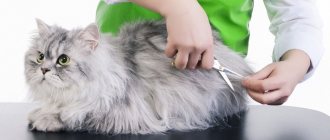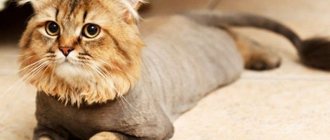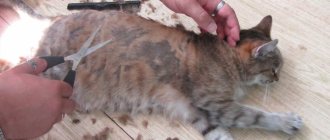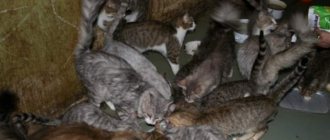Having a pet in the house adds many positive aspects to family life. Before getting an animal, you need to think carefully and approach this issue extremely responsibly. It is very important to provide him with maximum comfort, devote most of his free time, and give affection and warmth.
In this article, we will look at the symptoms and treatment of gingivitis in cats.
Symptoms of gingivitis in cats
Gingivitis in cats is the most common diagnosis that veterinarians give to cats. Quite rarely, young cats suffer from this disease. Most often, adults suffer from it.
Gingivitis is primarily an inflammation of the gums that can affect multiple teeth. Complications after gingivitis result in a more serious disease – periodontal disease. In this case, the ligaments that hold the teeth are subject to treatment.
The main symptoms of gingivitis in cats are plaque formation and bad breath.
It is very important to ensure that there are no small pieces of food left between your cat’s teeth after eating.
If they are not removed in time, then over time they will turn into the so-called yellow tartar. This is what will cause gum inflammation.
Body disorder, lack of vitamins and various external factors also lead to the development of gingivitis.
Symptoms of the disease
The danger of gingivitis is that this disease allows infection to spread from the teeth throughout the body, including vital organs such as the kidneys and liver. To exclude the possibility of these processes occurring, the owner must be able to distinguish between gum inflammation and its symptoms.
Symptoms indicating the presence of gingivitis:
- putrid smell from the cat's mouth;
- excessive drooling;
- bleeding gums;
- redness and swelling of the gums;
- refusal to eat due to pain in the gums during chewing;
- depressed state of the pet;
- the appearance of ulcers, wounds, and blisters with pus on the oral mucosa;
- At the moment of pressure on the gums, the cat experiences pain and breaks out.
If the animal is not treated, a severe stage of the disease develops, in which the following symptoms are observed:
- increased body temperature;
- deterioration of appetite and motor activity;
- loss of teeth.
Why is gingivitis dangerous in cats?
In the medical practice of veterinarians, gingivitis in cats is quite common. The disease can be hidden and not show obvious symptoms for alarm. Because of this, a loving owner does not always notice in time that the pet needs help.
Most often, the animal loses interest in its favorite toys and becomes drowsy and lethargic.
If the owner himself does not know how to treat gingivitis in a cat, the situation should not be neglected with the first symptoms of this disease; he should contact a veterinary clinic.
Lymphocytic gingivitis in cats
Lymphocytic gingivitis in cats is characterized by the entry of various harmful bacteria into the oral cavity. As a result, inflammation occurs not only of the gums, but of the entire oral cavity of the pet. This leads to the loss of appetite in the cat.
Veterinarians advise using antibiotics, various tablets and ointments for lymphocytic gingivitis. They will help remove inflammation and various infections.
Gingivitis occurs in early forms. Young cats suffer from it, due to their not fully formed organism.
Diagnosis and treatment
Since gingivitis has characteristic symptoms, the disease cannot be confused with another ailment upon visual examination. However, subsequent therapy depends on the setting of the form of gingivitis. To do this, you will need to perform a number of studies and tests.
What tests will the doctor prescribe?
To determine the form and extent of tissue damage, a smear analysis from the diseased gum and a blood test are prescribed. Tests help identify the causative agent of infection and select the right antibacterial drug for treatment. If necessary, an x-ray of the jaw is performed.
After identifying the plasmacytic-lymphocyte form, it will be necessary to examine the gum biomaterial using a microscope. The prescription of further therapy for complete victory over the pathology depends on its result.
Procedural treatment
For a quick recovery, it is important to regularly clean your cat's mouth and teeth. In a veterinary office, curettage of gum pockets and gums is performed, dead tissue and pathogenic plaque are removed.
In advanced cases, the doctor may suggest surgery to remove teeth (extraction). Total extraction (removal of all the cat’s teeth) is also used. This procedure does not have a strong effect on the pet’s eating habits, even if he eats exclusively dry food. You need to understand that if your pet is in severe pain and completely refuses to eat, the best solution for the cat’s future life and health is to follow all the doctor’s recommendations.
At home, you should also clean your teeth daily with a toothpaste prescribed by your doctor. Products intended for people should not be used to remove plaque. Dental hygiene should be performed with a clean cotton swab or a special toothbrush for animals. It can be purchased at a veterinary pharmacy. Small children's toothbrushes also have soft bristles. They can also be used to clean your cat's teeth.
In veterinary clinics, teeth are cleaned of tartar using ultrasound. The procedure is painless and harmless.
Drug treatment
To quickly eliminate pathogenic flora on tooth enamel and gums, powerful anti-inflammatory drugs and antibiotics are prescribed. In severe stages, injections are prescribed.
Interferon is prescribed to correct the functioning of the immune system. The doctor prescribes Prednisolone as an effective anti-inflammatory medicine. The dosage is prescribed individually by the attending physician.
Antibiotics used:
- Clindamycin.
- Lincomycin.
- Convenia.
- Stomorgil.
Important! All appointments should be made only by a qualified veterinarian. Otherwise, you can harm the health of the animal. It is important to calculate the dosage correctly to avoid increased side effects.
You can treat the oral cavity of representatives of the cat family with Metrogyl Denta medicinal paste. This medicine does not cause salivation or allergies and is well tolerated by the cat's body.
Anti-gingivitis pastes Zubastik and Dentavedin have also been specially developed for animals. These products are sold in veterinary pharmacies. They contain non-hazardous herbal and medicinal components that actively destroy the growth of harmful bacteria, stop infection and relieve pain. The product must be applied twice a day to the cleaned surface of the gum tissue and tooth enamel. For processing it is convenient to use a cotton pad or cotton swab. The duration of such treatment takes about two weeks.
The cat’s oral cavity is also treated with antiseptics - a solution of Chlorhexidine and Miramistin. These drugs kill pathogenic microflora and inhibit the spread of infection.
The drug Chlorhexidine is a powerful antiseptic that is used for dental treatment of people. It is suitable for both cats and dogs. The structure of gingival tissue and tooth enamel of the lesser brothers is similar to the structure of humans, therefore, veterinary medicine often uses remedies from medical practice.
Chlorhexidine has an anti-inflammatory effect, quickly heals wounds and cracks in the palate, and helps preserve the animal’s teeth. The antiseptic stops the activity of pathogenic bacteria, causing the manifestations of infection to decrease and tissue restoration to occur.
Folk remedies
How to cure pathology? The initial stage of the disease can be eliminated through complex treatment with medications and folk remedies. When gums are damaged, decoctions of medicinal chamomile, oregano, and strawberries are used. Herbal raw materials can be purchased at a regular pharmacy. It will take at least two to three weeks to treat the oral cavity, however, the chances of recovery if you use only folk remedies are low.
Recipes:
- Dried chamomile flowers are brewed with boiling water and left for about an hour. You can boil the broth for 5 minutes if desired. The resulting product is infused and filtered through cheesecloth. The tip of a cotton swab is moistened in the healing liquid and wiped the gums and enamel of the animal’s teeth. It is necessary to act carefully, otherwise the animal will begin to show anxiety and will not allow the owner to treat the oral cavity.
- Strawberries have a good anti-inflammatory effect. Dry raw materials are poured with boiling water, boiled on the stove and infused. Next, the decoction is filtered and used several times a day to treat the palate, teeth and gum tissue (as in the example above).
Plasmacytic gingivitis in cats
Another type of stomatitis is plasmacytic gingivitis in cats. It is characterized by an inflammatory disease of the oropharyngeal mucosa, which is accompanied by severe pain affecting the entire oral cavity.
This type of stomatitis most often occurs in older cats. It requires careful monitoring and serious intervention by experienced doctors.
Seizures in cats - main causes, symptoms, first aid, treatment and choice of drugs (110 photos)Polycystic kidney disease in cats - causes, diagnosis and symptoms of the disease. Treatment options and prevention of kidney disease (95 photos)
Tartar in cats - signs of the disease and methods of fully treating tartar (125 photos + video)
Prevention
- Regular examination of the oral cavity by a veterinarian and timely removal of tartar and damaged teeth.
- Brushing your teeth with a special brush at home to remove plaque. The most convenient are brushes that fit on your finger. The sooner you teach your cat to brush, the faster she will get used to this procedure.
- Strengthening immunity, balanced diet.
- You should not give food with an abundance of small and sharp bones.
- To prevent tartar, you can purchase special food for cleaning teeth.
Photos of gingivitis in cats
Ringworm in cats - main signs, symptoms, prevention and treatment of ringworm in cats (105 photos)Pancreatitis in cats: first symptoms, nutritional nuances and treatment options (125 photos and videos)
Subcutaneous mites in cats - first symptoms, treatment options and real photos of examples of parasite damage (110 photos + video)
▶ 2:06
6 Nov 2016 - Added benefits
Read here Normal temperature in a cat: norms, deviations, measurement options and an overview of diseases associated with temperature changes (105 photos)
Help the site, share with friends 
